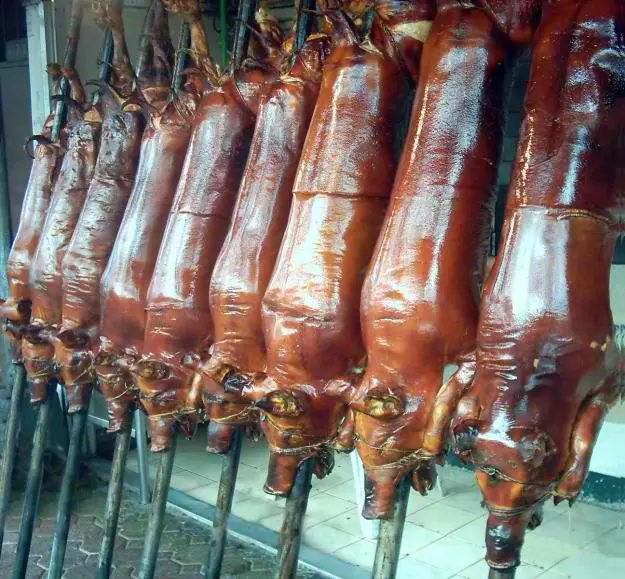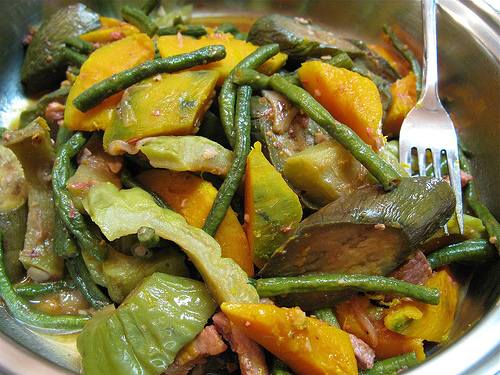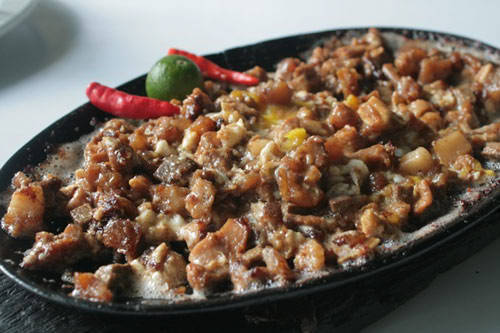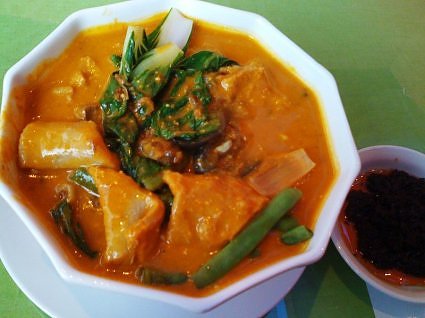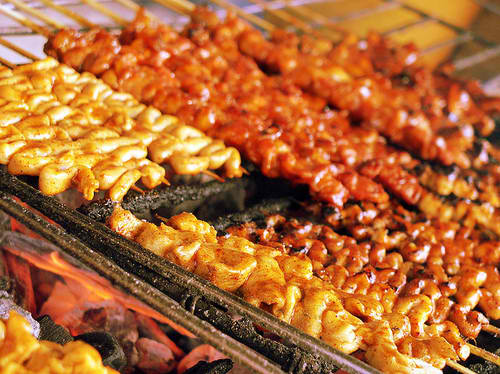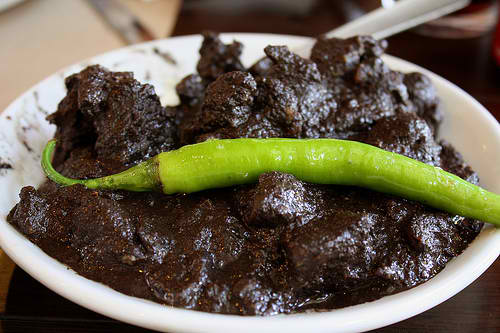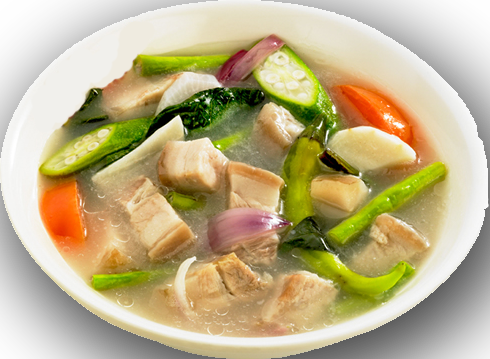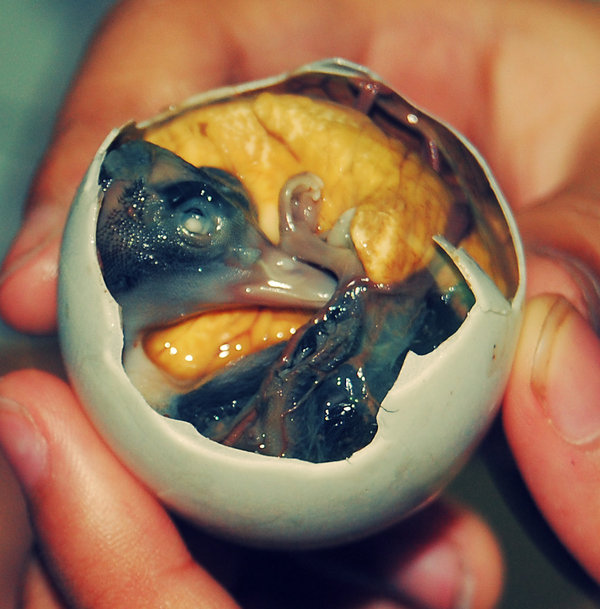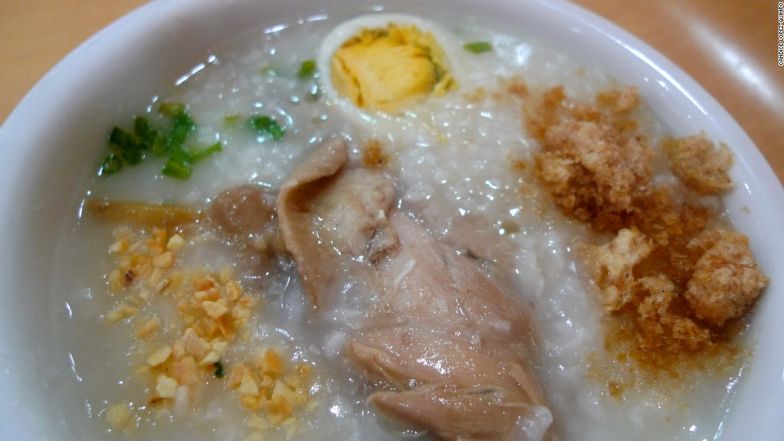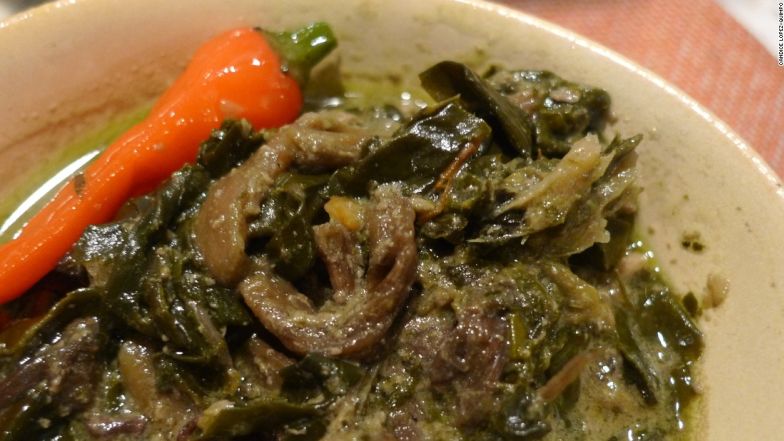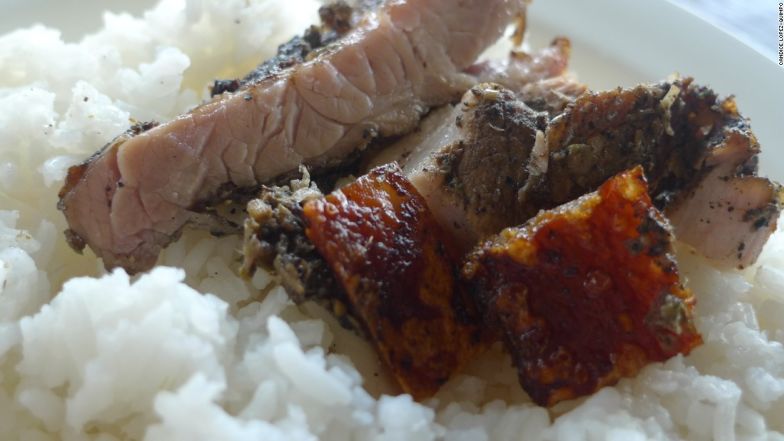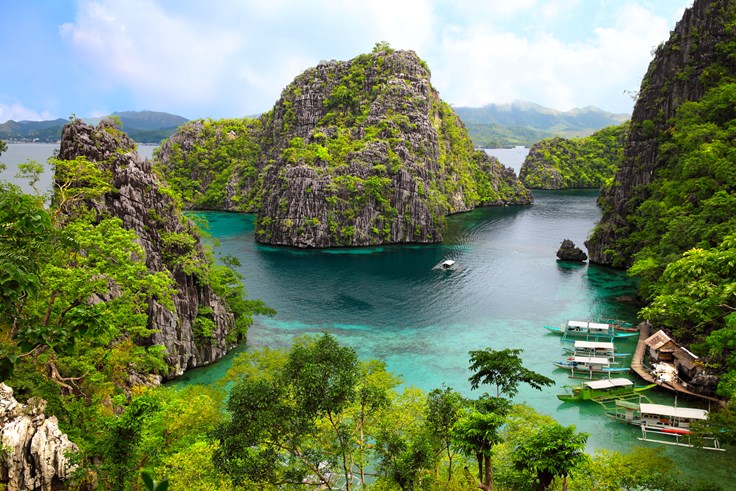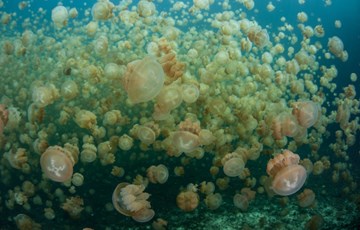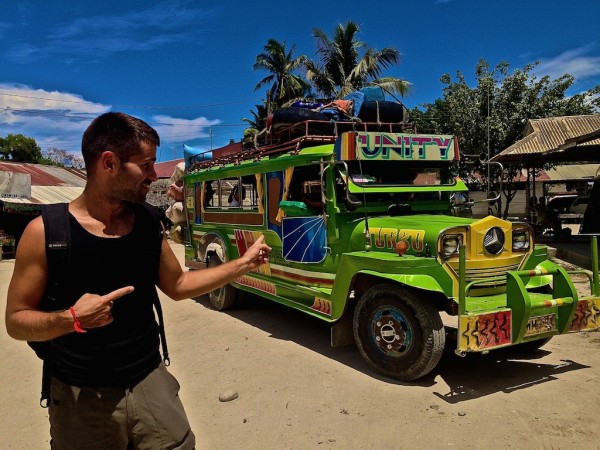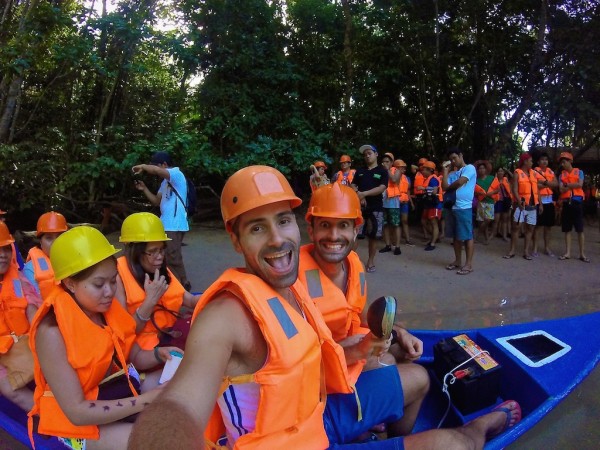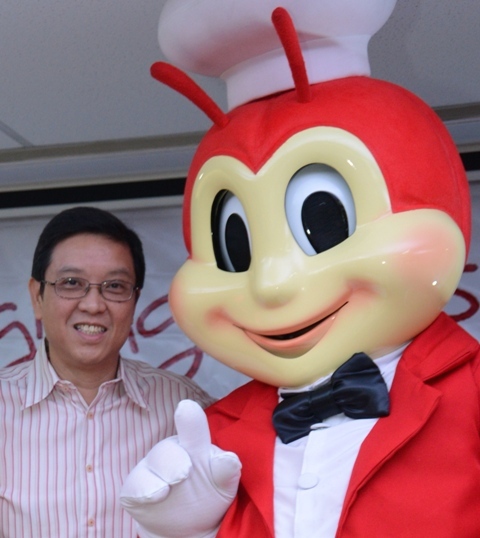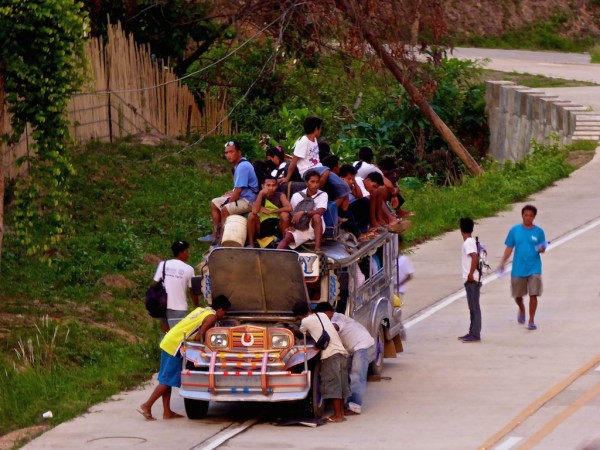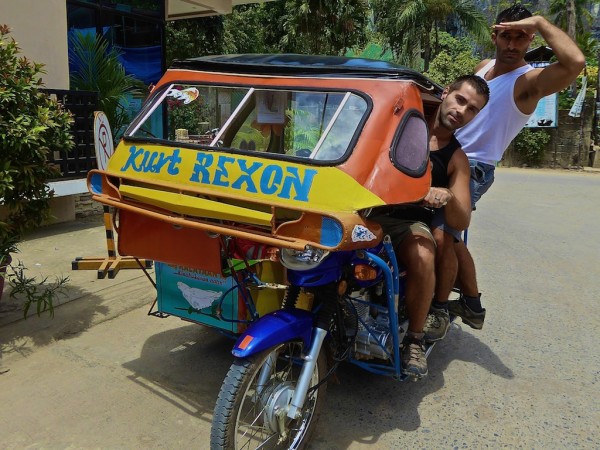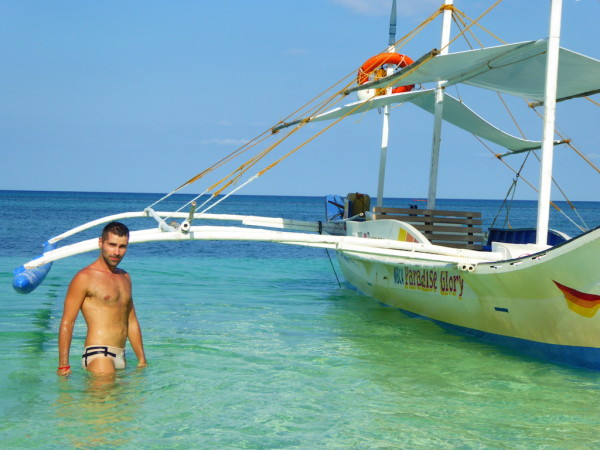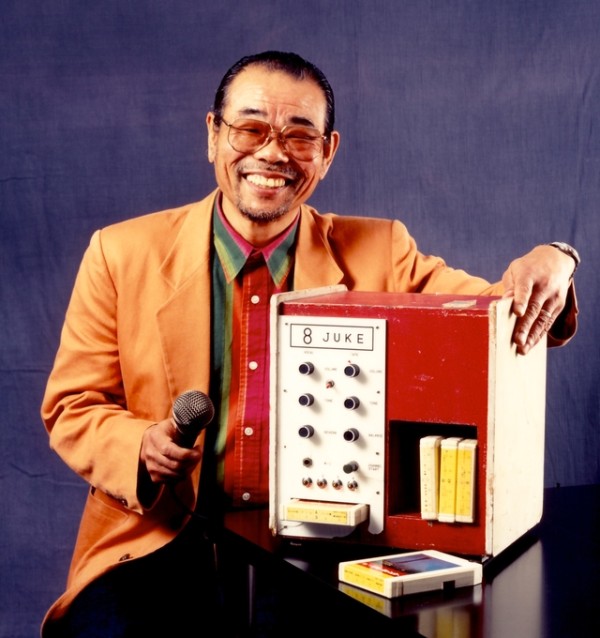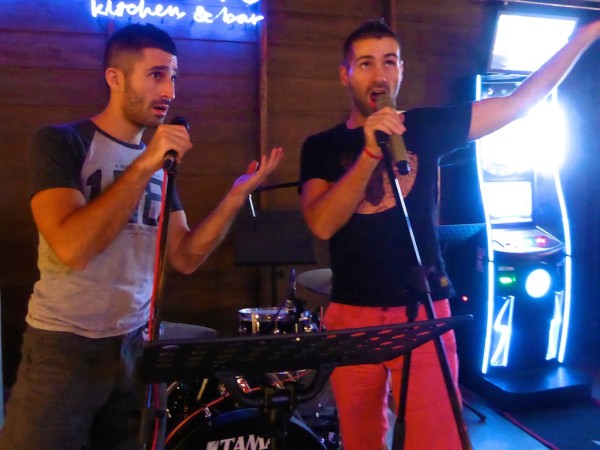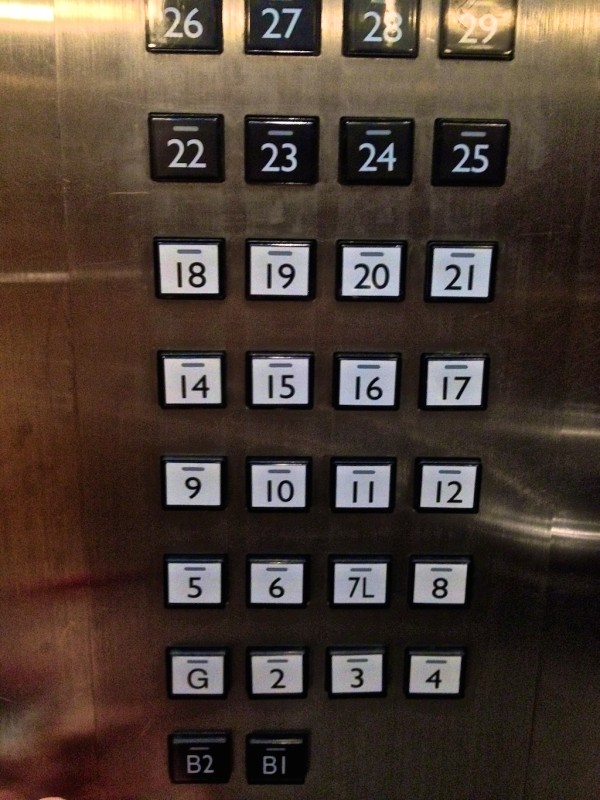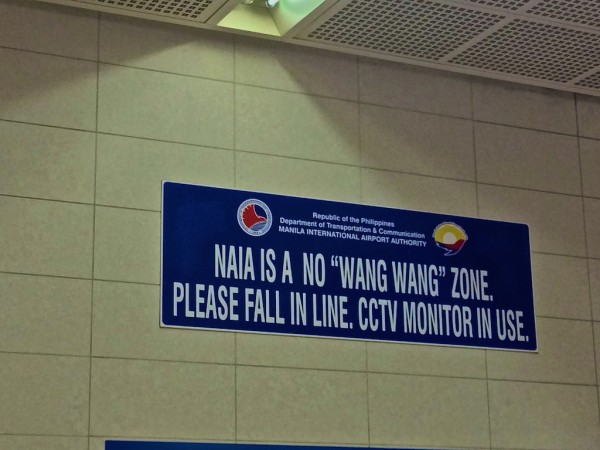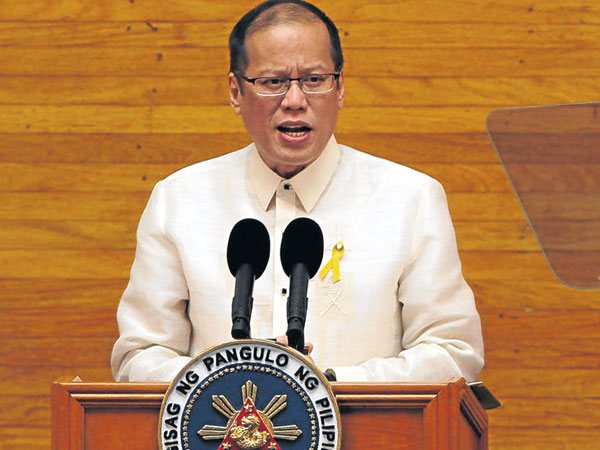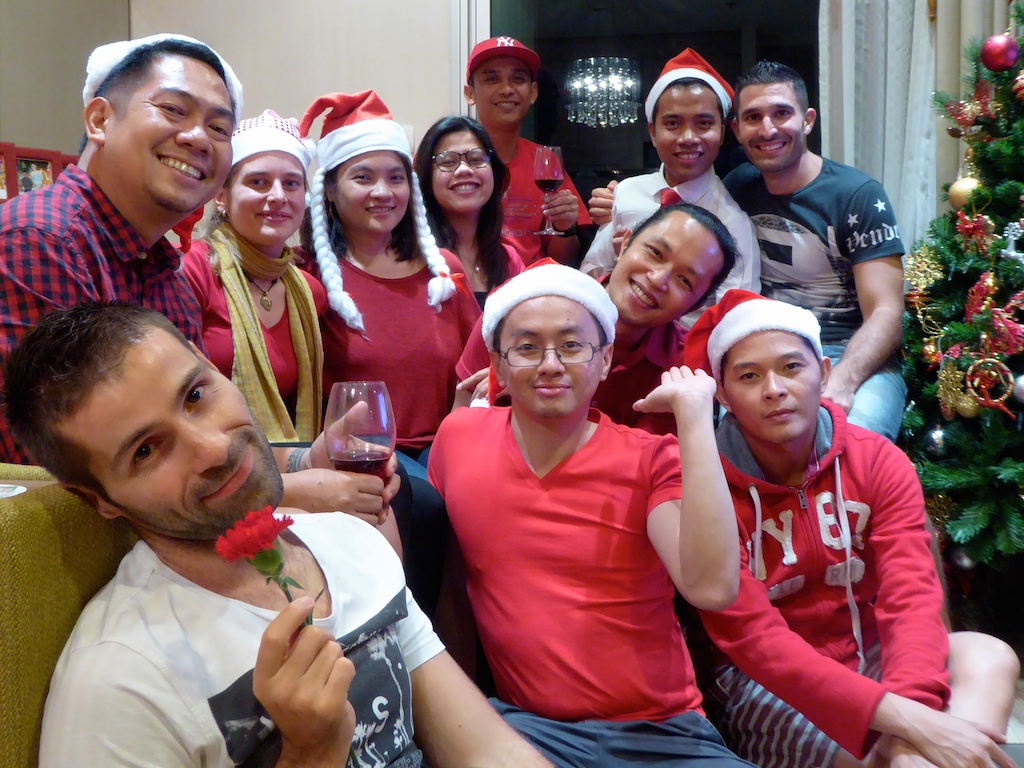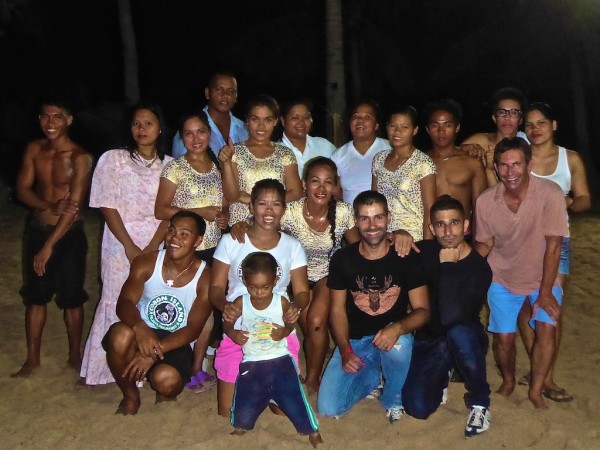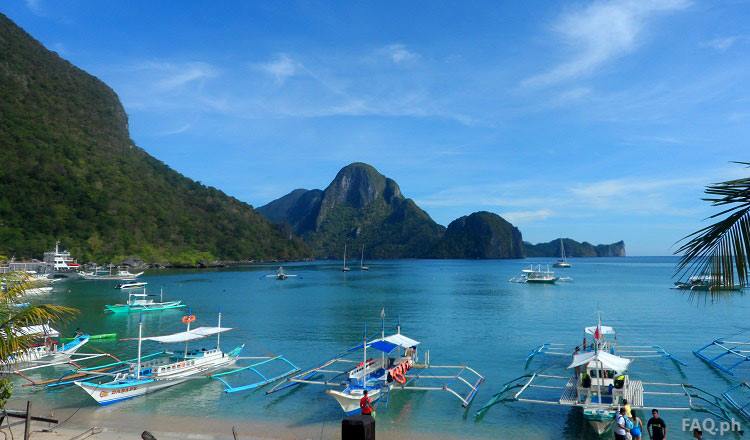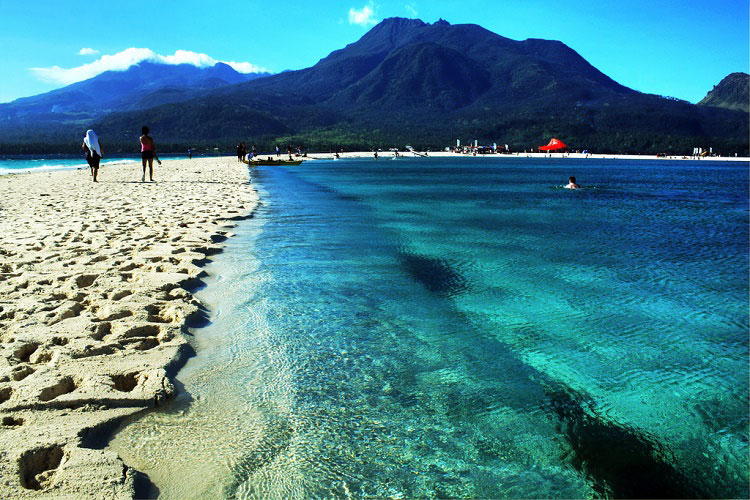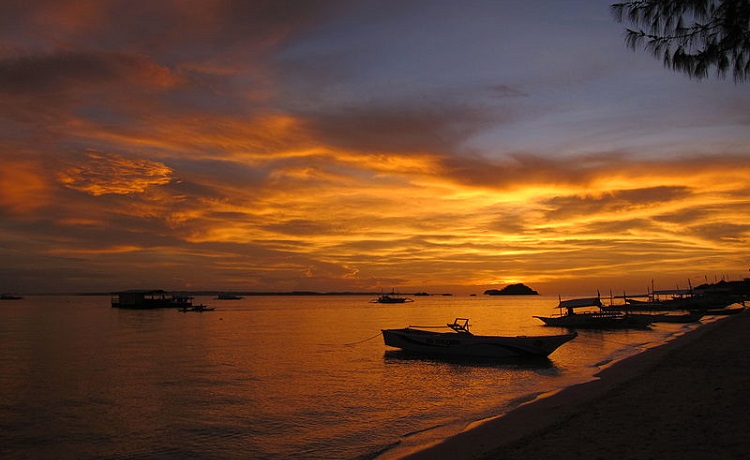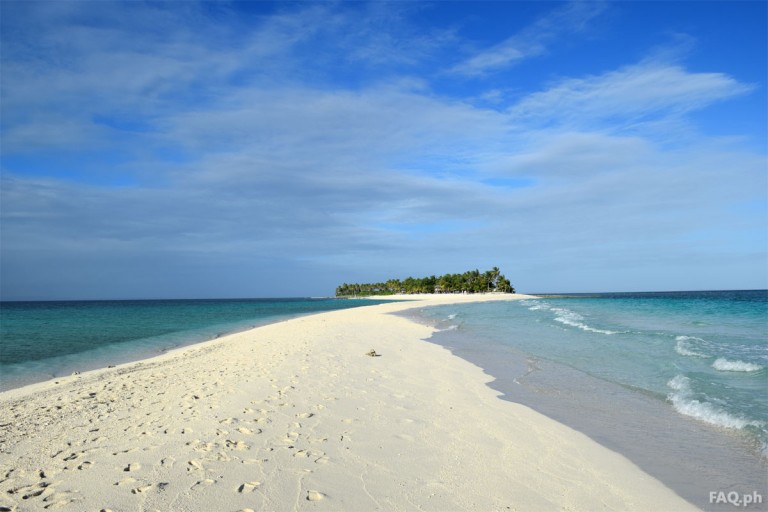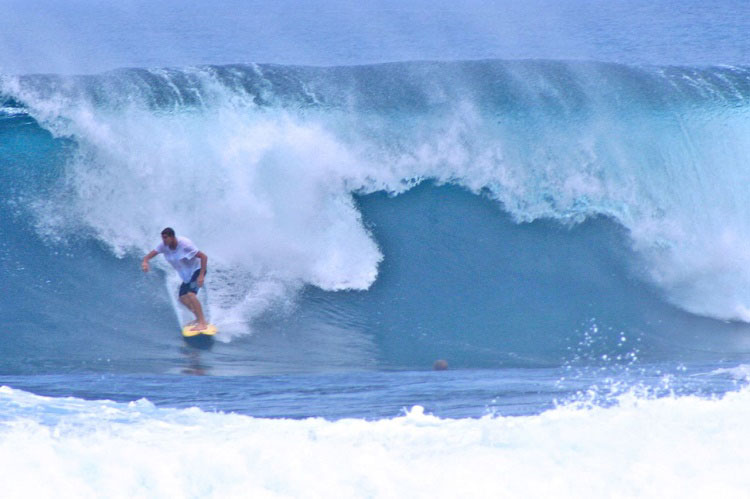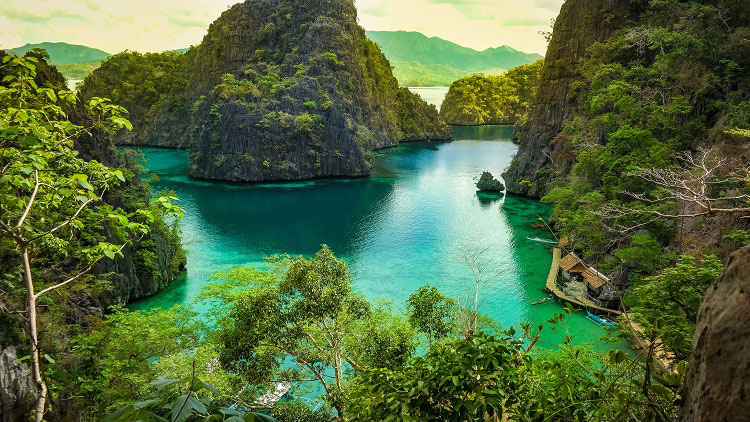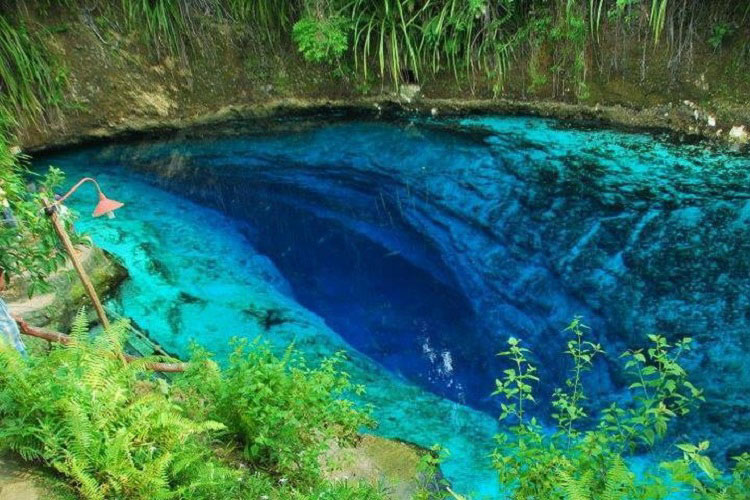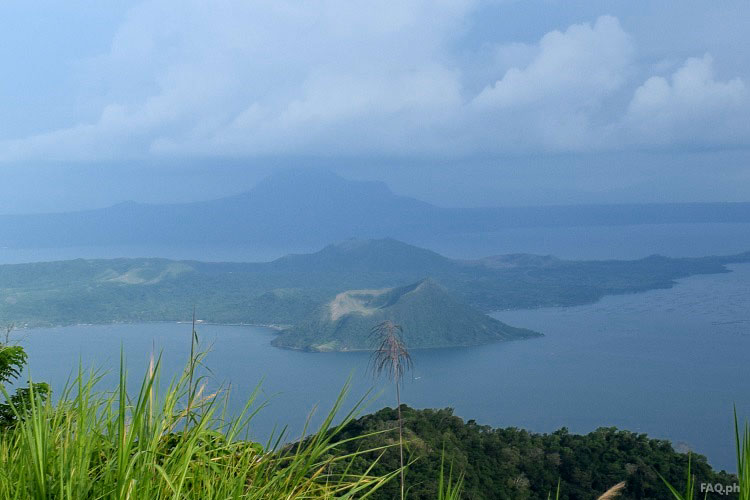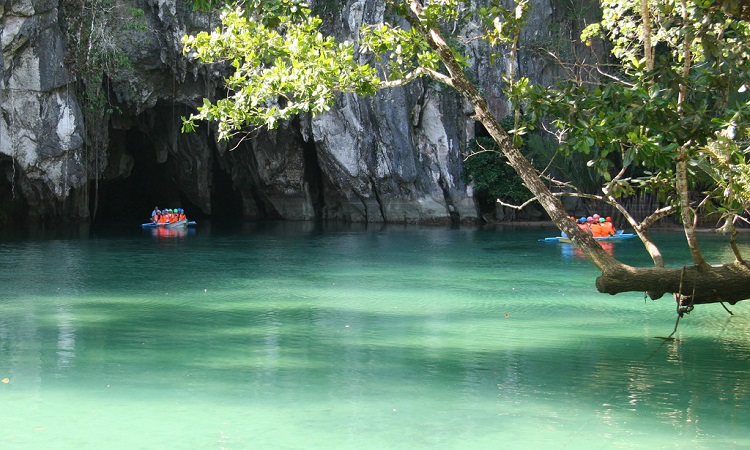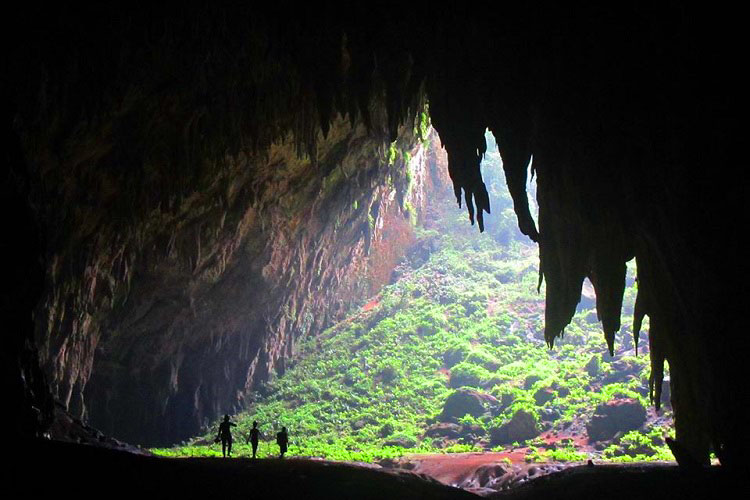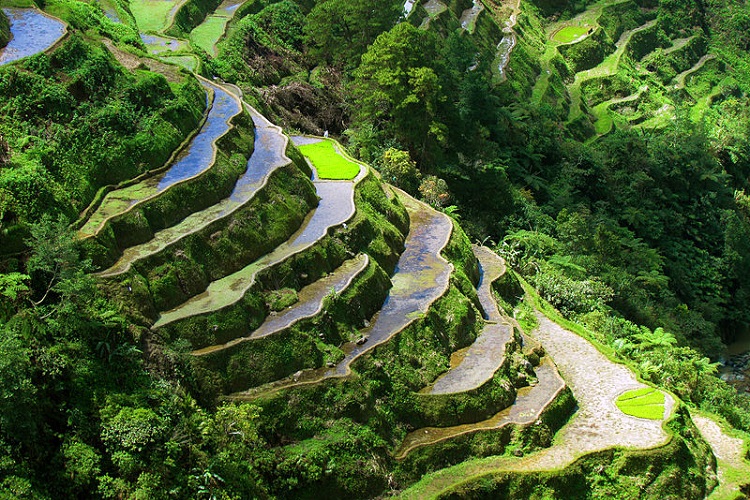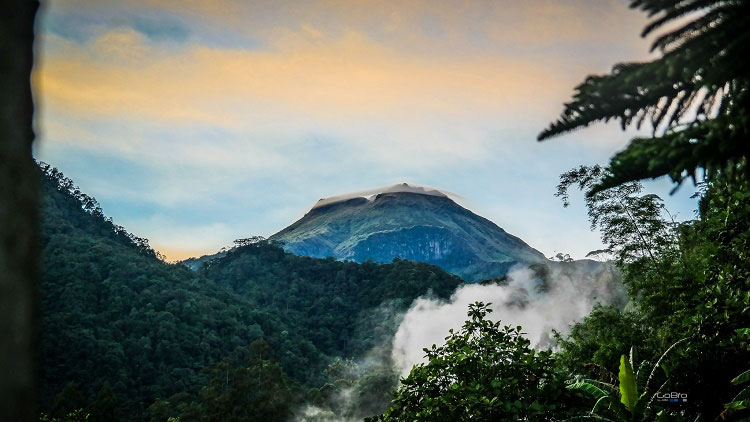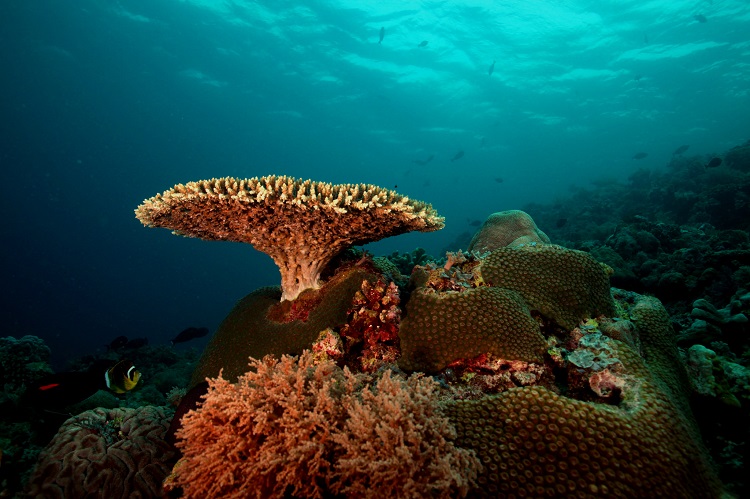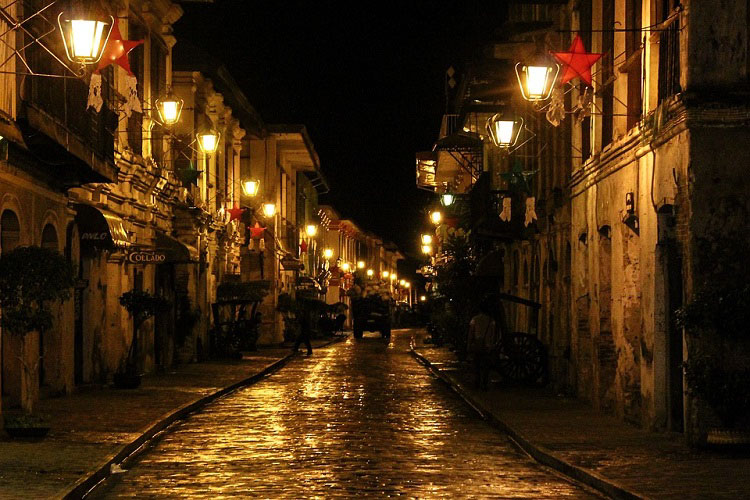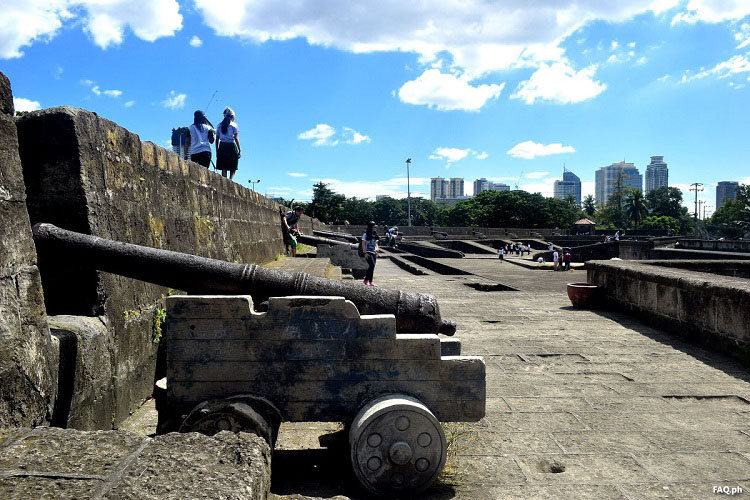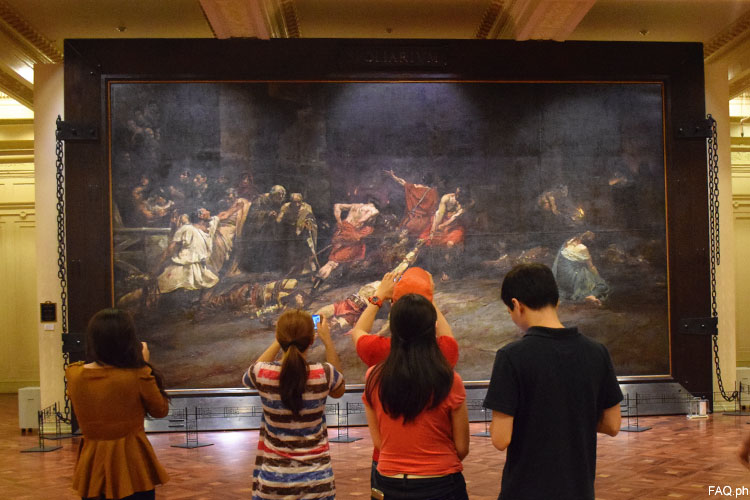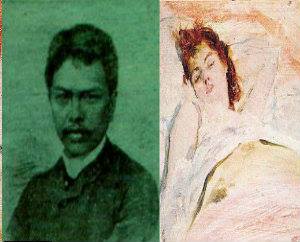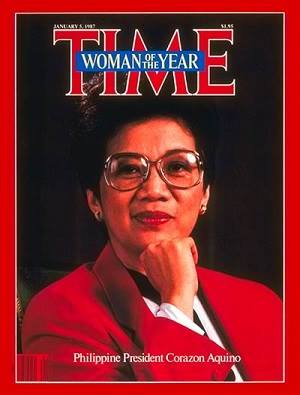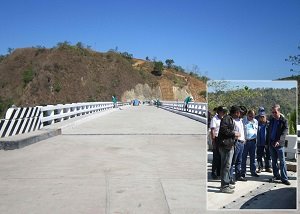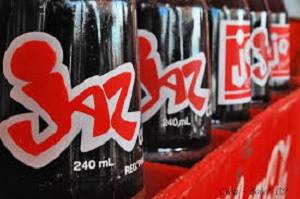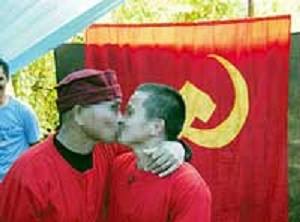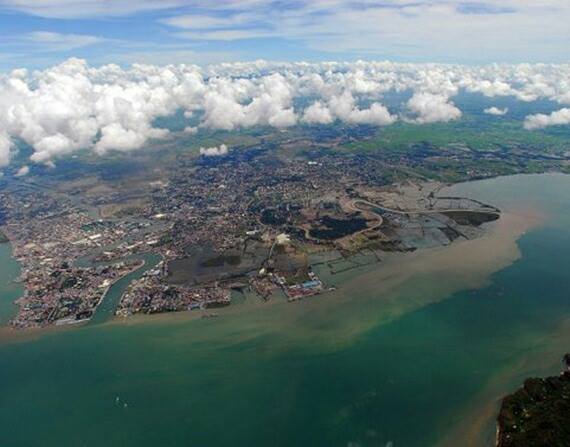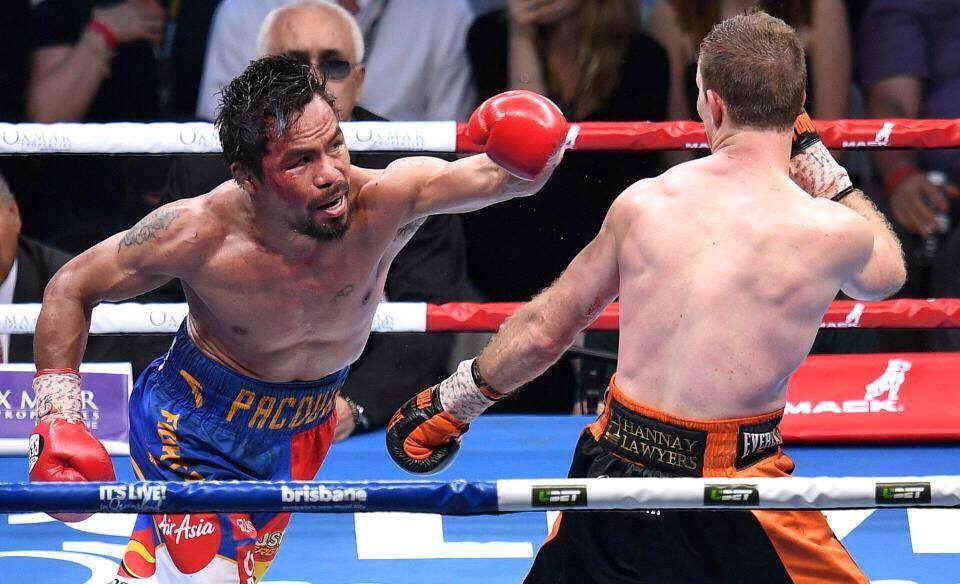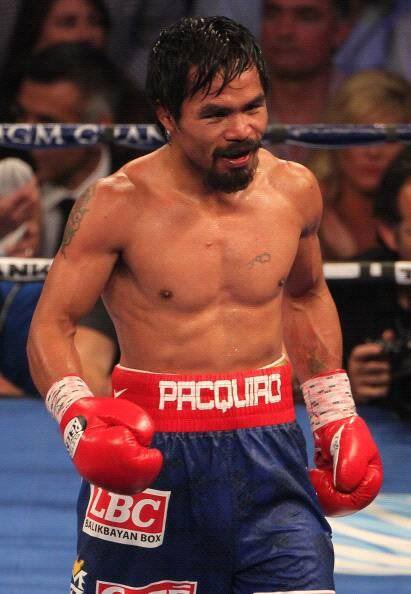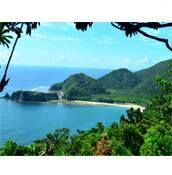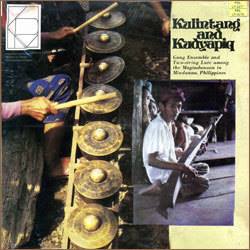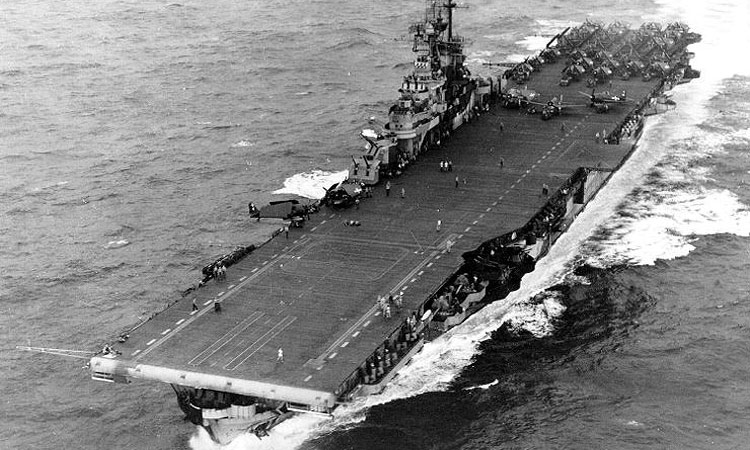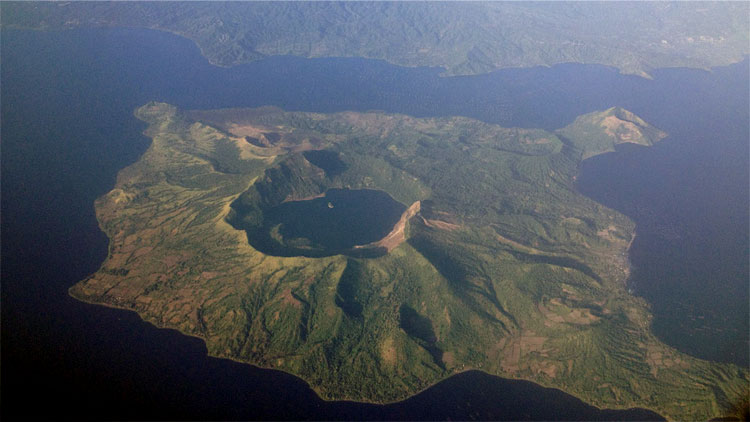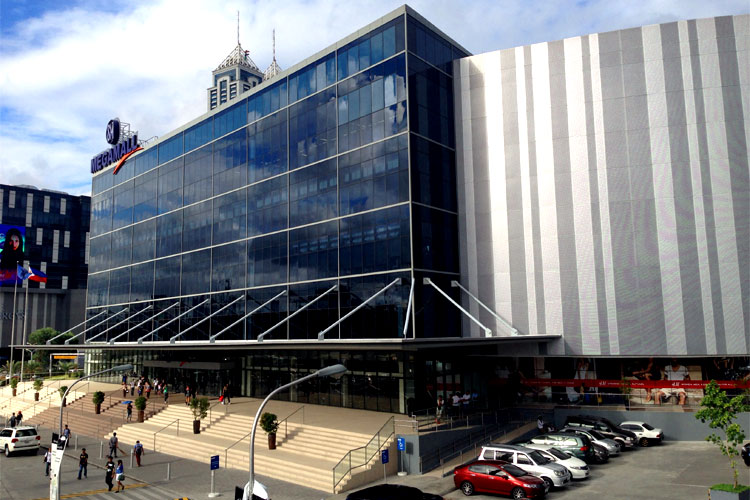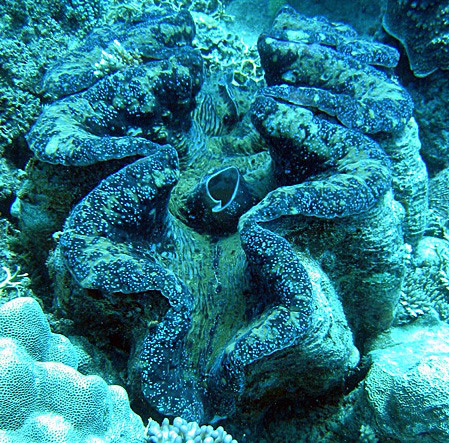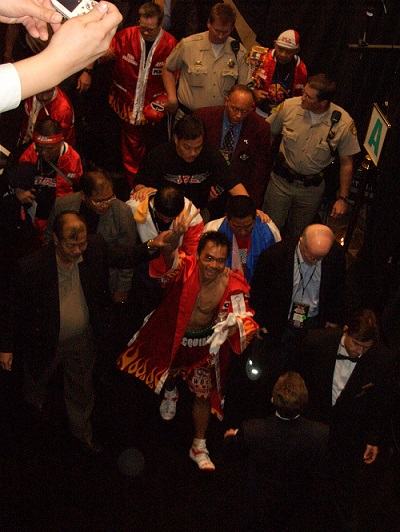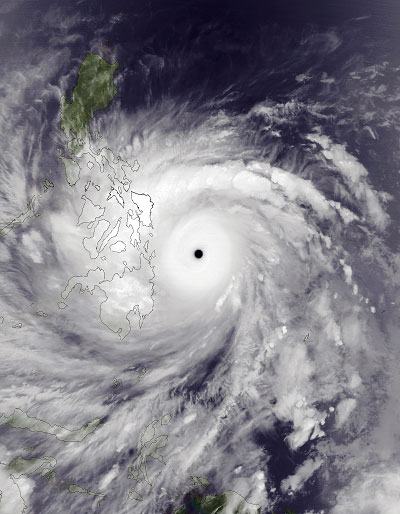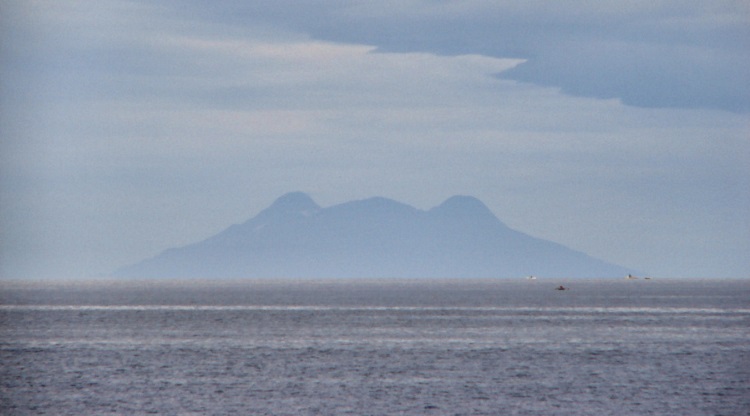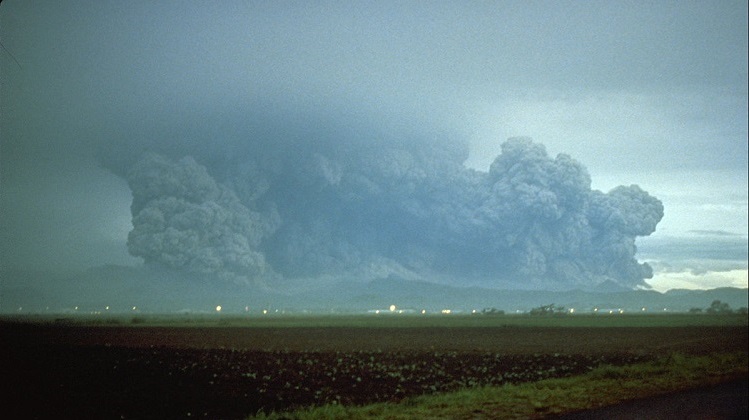(CNN) — Filipino food may not be as famous as that of its Thai and Vietnamese neighbors.
But with more than 7,000 islands and a colorful history, this archipelago has some delicious dishes of its own.
Blessed with an abundance of seafood, tropical fruits and creative cooks, there’s more to Filipino food than the mind-boggling balut (duck embryo).
You just have to know where to find them and how to eat them.
Let us know your favorites by posting photos on Twitter or Instagram with the #CNNFood hashtag.
1. Adobo
No list of Filipino food would be complete without adobo.
A ubiquitous dish in every household in the Philippines, it’s Mexican in origin.
But Filipinos found that cooking meat (often chicken and pork) in vinegar, salt, garlic, pepper, soy sauce and other spices was a practical way to preserve it without refrigeration.
This cooking style can be applied to different meats or even seafood.
It’s best sample it in a Filipino home, but the garlicky version of the lamb adobo can be found at Abe restaurant in Taguig.
Abe Serendra, Serendra Plaza Serendra Plaza, Taguig City, Luzon Philippines;
2. Lechon
The lechon is the most invited party guest in the Philippines.
The entire pig is spit-roasted over coals, with the crisp, golden-brown skin served with liver sauce, the most coveted part.
In Cebu, the stomach of the pig is stuffed with star anise, pepper, spring onions, laurel leaves and lemongrass resulting in an extremely tasty lechon, which needs no sauce.
In Manila, folks can get their piggy from Elar’s Lechon, while in Cebu, the best is CnT Lechon.
Elar’s Lechon, 151 Quezon Avenue Corner Speaker Perez Street, Quezon City, Luzon 1114 Philippines;
CnT Lechon, 1377 V. Rama Avenue Guadalupe, Cebu City Philippines;
3. Sisig
Nothing goes to waste in Filipino food.
In the culinary capital of Pampanga, they turn the pork’s cheeks, head and liver into a sizzling dish called Sisig.
The crunchy and chewy texture of this appetizer is a perfect match for a cold beer.
Serve with hot sauce and Knorr seasoning to suit the preference of you and your buddies.
Credit goes to Aling Lucing, who invented this dish at a humble stall along the train railways in Angeles City, Pampanga.
While Sisig can be found in many restaurants, try the original version at Aling Lucing Sisig.
Aling Lucing Sisig, Adjacent to Abacan Bridge Henson Street, Angeles City, Luzon Philippines;
4. Crispy pata
Not for the easily spooked, this pork knuckle is simmered, drained and deep fried until crisp.
The meat is tender and juicy inside, with a crisp, crackling exterior.
Served with vinegar, soy sauce and chili.
The Aristocrat, 432 San Andres Street corner Roxas Boulevard, Malate, Manila, Luzon Philippines;
5. Chicken inasal
Yes, it’s grilled chicken.
But in Bacolod, this is no ordinary grilled chicken.
The meat is marinated in lemongrass, calamansi, salt, pepper and garlic and brushed with achuete (annatto seeds) oil.
Every part of the chicken is grilled here from the paa (drumstick), pecho (breast), baticulon (gizzard), atay (liver), pakpak (wings) and corazon (heart).
It must be eaten with a generous serving of garlic rice, with some of the orange oil used to marinade the chicken poured over the rice.
You can go chicken crazy at Manokan Country where there is a row of authentic Inasal restaurants.
Aida’s Chicken, Fr. M. Ferrero St Manokan Country, Bacolod, Negros Occidental Philippines;
6. Taba ng talangka
The fat of a small variety of crabs are pressed and sauteed in garlic.
This cholesterol-laden Filipino food is often used as a sauce for prawns or eaten with fried fish and rice.
The best taba ng talangka comes from the provinces of Pampanga, Tarlac and Bulacan.
It’s worth buying a bottle or two from the markets there, or pasalubong shops like Bulacan Sweets.
Bulacan Sweets, 155 N.S. Amoranto Ave., Quezon City, Metro Manila; +63 2 740 2171
7. Pancit Palabok
When Filipinos have guests, they don’t skimp.
The pancit palabok served on most birthday parties oozes with flavors and textures.
The noodle dish is layered with rice noodles, a rich orange sauce made from shrimp broth, pork, hard boiled eggs, shrimps, chicharon (pork rinds) and sometimes oysters and squid
8. Bulalo
Despite the perennial heat, Filipinos often enjoy sipping piping hot bulalo soup made with from freshly slaughtered Batangas beef.
The broth is rich with flavors seeped from the beef after boiling for hours.
The bones are big, meaning more bone marrow to enjoy.
In Santo Tomas, Batangas, there’s a row of restaurants along the highway serving bulalo.
Rose and Grace Restaurant, Maharlika Highway Batangas, Santo Tomas, Luzon 4324 Philippines;
9. Arroz Caldo
While chicken soup soothes sick Westerners, Filipinos turn to arroz caldo, a thick chicken rice porridge.
Cooked with ginger and sometimes garnished with a hard-boiled egg, toasted garlic and green onions, this Filipino food is sold in street-side stalls.
If dining al fresco doesn’t suit, there’s the Via Mare outlets around Manila.
10. Fish tinola
The freshness of Cebu’s rich marine life can be tasted in its fish tinola.
The simple sour broth is flavored with onions, tomatoes and sambag (tamarind) and cooked over coco-lumber firewood for hours.
Cebuanos know to go to A-One, a small hole in the wall known, cooking up to 200 kilos of fish daily.
A-One, Rd. North 6, North Reclamation, Cebu City
11. Kare-kare
This stew of oxtail has the most delicious sauce made from ground toasted rice and crushed peanuts.
Banana blossom, eggplants and string beans add more interesting textures, making it a complete meal on its own.
It’s eaten with steamed rice and bagoong (shrimp paste).
While mom’s kare-kare is always best, the version at Cafe Juanita is authentic.
Cafe Juanita, 2 United St Kapitolyo, Pasig, Luzon Philippines;
12. Kamaro
Serious gourmands know the best cooks come from Pampanga.
So do kamaro, these mole crickets they cook into a delicious appetizer.
What makes this delicacy special?
Well, if catching these bugs is tough, so is cooking them.
Legs and wings must be removed, then the body is boiled in vinegar and garlic.
It’s then sautéed in oil, onion and chopped tomatoes until they turn chocolate brown.
These bite-size appetizers are crunchy on the outside and moist on the inside.
Sample Kamaru at Everybody’s Cafe, an authentic Pampango dining institution for many decades now.
Everybody’s Cafe, MacArthur Highway Dau, San Fernando, Luzon Philippines;
13. Ilocos empanada
Yes, its name reveals its Spanish origins.
But its ingredients are all local.
Grated unripe papaya or bean sprouts, egg and loganiza (pork sausage) are stuffed in the empanada and deep fried, accompanied with a spicy vinegar sauce.
Get this staple Filipino food from stalls beside the cathedrals in Vigan and Laoag.
14. Sinigang
Sinigang is a stew of fish, prawns, pork or beef soured by fruits like tamarind, kamias or tomatoes.
Often accompanied by vegetables like kangkong, string beans and taro, this stew is eaten with rice.
A modern, but delicious spin on Sinigang is Sentro 1771’s version called Sinigang Corned Beef.
Sentro 1771, 2/F Greenbelt 3, Makati, Luzon Philippines;
15. Tapa
Filipinos are huge rice eaters, and breakfast is no exception.
A tap-si-log consists of thin slices of dried marinated beef served with fried egg and garlic rice.
While it is breakfast fare, it’s also a quick, satisfying meal you can eat anytime and available in most places.
Making it accessible all the time and even available for deliveries, Tapa King serves it in the classic, sweetish and spicy versions.
Tapa king, #13 Ano 96 Street, Brgy. Hagdang Bato, Libis Mandaluyong City 1552, Manila, Luzon Philippines;
16. Dinuguan at puto
It may not look appetizing.
But this black dish of pork and pig innards — stewed in fresh pig blood seasoned with garlic, onion and oregano and eaten with a white puto (rice cake) or steamed rice — is a comforting dish for many Filipinos.
The MilkyWay Cafe’s version tastes homemade and clean.
MilkyWay Cafe, 2/F MilkyWay Bldg, 900 Arnaiz Ave (Pasay Road) corner Paseo de Roxas, Makati, Luzon 1200 Philippines;
17. Betute
The French may have turned frogs’ legs into a delicacy, but Filipinos take it to the next level.
They get a frog, stuff it with minced pork and deep-fry it.
While betute isn’t for everyone, the adventurous can try it at Everybody’s Cafe.
Everybody’s Cafe, MacArthur Highway Dau, San Fernando, Luzon Philippines;
18. Laing
This dish of taro leaves cooked in rich coconut milk is an everyday staple in Bicol.
Morsels of meat and chili are added to give punch to the Laing.
It’s eaten with steamed rice.
The authentic versions from kitchens in Naga and Albay are most delicious.
In Manila, it can be found at Dencio’s.
Dencio’s Bar and Grill, Gateway Mall, Araneta Center Aurora Boulevard, Cubao, Quezon City, Luzon Philippines;
19. Pinakbet
Up north in Ilocos, the vegetable dish of okra, eggplant, bitter gourd, squash, tomatoes and bagoong (shrimp or fish paste) called pinakbet is a favorite.
And now, this healthy, cheap, and easy to cook dish has made its way around the archipelago.
It is cooked in most households and local restaurants.
Max’s Restaurant, Ayala Avenue Ground Floor, Convergys Building, Makati, Luzon Philippines;
20. Sinugno
Cooking with coconut milk is common in the province of Quezon, south of Manila.
Freshwater tilapia fish is grilled then simmered in coconut milk and chili.
It’s definitely freshest when eaten close to the fishponds as they do in Kamayan Sa Palaisdaan.
Kamayan sa Palaisdaan Hotel & Resort, Brgy. Dapdap, Tayabas City, Quezon Philippines;
21. Bagnet
The lechon kawali, the deep fried pork, is a popular Filipino food all over the country.
Meanwhile, bagnet, a siimlar dish from the northern province of Ilocos, is coveted for its irresistible crunchy skin dipped in the sweet-sour vinegar sukang Iloko.
Buy it from the markets of Ilocos, or try it at Cafe Juanita.
Cafe Juanita, 2 United St Kapitolyo, Pasig, Luzon Philippines;
22. Pancit habhab
Trust Filipino ingenuity to adapt noodles to their lifestyle.
In Lucban, Quezon, pancit habhab is served on a banana leaf and slurped.
Garnished with carrots, chayote, and a few pieces of meat, this cheap noodle dish is most often eaten by students and jeepney drivers on the go.
For an extra special version, there’s the Old Center Panciteria which has been making the noodles since 1937. Cooks there add lechon, a generous serving of vegetables, and even hand you a fork.
Old Center Panciteria, 85 San Luis St. Lucban, Quezon; +63 42 540 3068
23. Pork barbecue
In a country where almost everything is marinated, skewered and grilled in the street corners, everyone has their favorite barbecue meat.
Pork is the most popular.
Cebu is known for barbecue stalls along Larsian Street just off Fuente Osmena Circle.
Manila residents are addicted to that from Ineng’s, which has many outlets in Metro Manila, for its big, chunky pieces of pork with a perfect, salty-sweet marinade.
Ineng’s, Dela Rosa Car Park, Dela Rosa Street, Legaspi Village, Makati City, Metro Manila
24. Longaniza
Every province has their version of the pork sausage called longaniza.
It varies from sweet to garlicky to spicy.
Usually eaten for breakfast with garlic rice, fried egg and a dipping sauce of vinegar.
Zoricho, 118 Silver City, Frontera Verde, Ugong, Pasig City, Metro Manila; +63 2 571 3269
25. Lumpiang ubod
The fruit, leaves and even the pith of the coconut tree is used in Filipino food.
The pith makes a sweet and tender filling for the fresh lumpia, our version of the spring roll.
A delicate egg wrapper contains a savory filling of ubod (the pith of the coconut tree), shrimps, pork, onions and a garlicky sweet sauce.
Bacolod city is known for its petite version of this spring roll.
El Ideal, 118 Rizal Street, Silay City Philippines;
Bailon Homemade Ilonggo Delicacies, 1115 Rodriguez Ave., Bangkal, Makati; +63 2 843 6673
26. Bicol express
A fitting tribute to people who love coconut and spicy food is bicol express, a fiery chili, pork and coconut milk stew.
It can be tried at the hole-in-the-wall eatery called Top Haus in Makati.
Top Haus, 5994 J.D. Villena St., corner Mabini Street, Poblacion, Makati
27. Relyenong alimango
Filipino cooks are never fazed by fuzzy food preparations like relyenong alimango.
The crab is delicately peeled then sauteed with onions, tomatoes, herbs and stuffed back into the crab shell, then deep fried.
Chicken or bangus (milkfish) are also cooked relyeno.
Often cooked in homes for fiestas, but enterprising housewives sell them at the Sunday market in Quezon City (Centris Mall, Edsa, Quezon City) or the Saturday market in Makati (Salcedo Village, Makati).
28. Balut
No trip to the Philippines would be complete without sampling its famous balut.
Vendors peddling these eggs on the street chant “Baluuuuut!” to entice buyers.
This 17-day-old duck embryo is boiled, served with rock salt or spicy vinegar and is often consumed with beer.
29. Inihaw na panga ng tuna
General Santos and Davao City are known for their numerous ways with tuna.
The panga or jaw is often grilled over coals and dipped in sauce of soy sauce, vinegar, chili and calamansi (local lemon).
Marina Tuna, J. P. Laurel Ave, Davao City, Mindanao Philippines;
30. Fish kinilaw
The day’s fresh catch is dressed in palm coconut vinegar, ginger, chili and spices.
Each province has its own way of preparing kinilaw.
Most wet markets will prepare this for you.
Most popular in Cebu is to eat it in Su-tu-kil, the row of seafood eateries (Lapu-LapuCity, Mactan,Cebu).
31. Kuhol sa gata
Fresh snails cooked in coconut milk and leafy vegetables.
The snails are served in the shell and a tiny fork (or toothpick) is used to loosen the meat inside.
This is usually served as an appetizer or a snack, but it works well with hot rice.
Barrio Fiesta, Makati Ave. cor. Valdez St, Makati, Luzon Philippines;
32. Sinanglay
Fresh tilapia is first stuffed with tomatoes and onions.
Then simmered in coconut milk and wrapped in pechay leaves (similar to bokchoy), which helps keep the fish together and adds a peppery taste.
It’s a staple Filipino food.
33. Inihaw na Liempo
A Filipino-style barbecue using a popular pork part: liempo (pork belly).
Arguably, the best is Cebuano style — a slab of liempo stuffed with herbs and spices and roasted.
The result is juicy flavorsome meat inside and crackling skin outside.
34. Empanada de kaliskis
The literal translation of these words is scaly pie.
A traditional meat pie from Malolos, it is a flaky, croissant-like pastry filled with chicken and deep fried.
Adarna Food and Culture, 119 Kalayaan Avenue Diliman, Quezon City, Luzon Philippines;
35. Tinolang tugac
Frog isn’t common in Manila.
But a few miles away in Pampanga you’ll see it stuffed or stewed.
Or simply taking the place of chicken, such as in the common tinola — a ginger-based soup usually cooked with chunks of green papaya and chili pepper leaves.
36. Camaro rebosado
Shrimp coated in egg and flour batter and deep fried.
Served with a tomato-based sweet and sour sauce for dipping.
37. Bibingka
For many Filipinos, Christmas is marked by the scent of bibingkas cooking at dawn.
These rice cakes are made by soaking the rice overnight, grinding it with a mortar stone and mixing in coconut milk and sugar.
Laborious.
The batter is poured into clay pots with banana leaves, with coals on top and below.
It’s garnished with salted eggs, kesong puti (white cheese made from Carabao’s milk) and slathered with butter, sugar and grated coconut.
Best eaten hot from weekend markets.
The best one is from Aling Linda at the Sidcor Sunday Market at Centris Mall, Edsa, Quezon City.
For the rest of the week, there’s Via Mare or Ferino’s Bibingka with branches all over Metro Manila.
Cafe Via Mare, Shop 138, Greenbelt 3 Ayala Center, Makati, Luzon Philippines;
38. Suman at manga
Sold along the roadside, suman are sticky rice snacks steamed in banana or coconut leaves.
There are many versions of suman, depending on the ingredients and leaves used.
These Filipino food snacks are often paired with sweet ripe mangoes.
They’re cheap snacks, which travel well.
They can be bought from roadside stalls, or enterprising vendors peddling them on buses.
39. Champorado
When the rains start pouring and classes are suspended, children love this comforting breakfast — a chocolate rice porridge.
It’s hot, rich and filling.
To offset the sweetness it’s often served with dried fish.
This breakfast of champs can be eaten in roadside carinderias or there’s the triple chocolate version at Max’s Fried Chicken in various cities.
40. Halo-halo
Many people joke that the Philippines has two seasons: hot and hotter.
Cool off with some halo-halo.
In Manila, MilkyWay Cafe offers the best halo-halo with finely shaved ice and a generous serving of leche flan, gulaman, ube, banana, kaong, beans and garbanzos, milk and a scoop of ube ice cream.
MilkyWay Cafe, 2/F MilkyWay Bldg, 900 Arnaiz Ave (Pasay Road) corner Paseo de Roxas, Makati, Luzon 1200 Philippines;
41. Buco pie
Go loco over coconut.
In the province of Laguna, buco pie (young coconut pie) wars are hot.
Each claims to be the best.
Orient D’ Original may have a tacky name but this pie shop has been a favorite for 45 years.
They serve the pie hot, with a delicious filling with generous layers of tender coconut meat.
Orient D’ Original, National Highway, Los Banos, Laguna, +63 4 9536 3783
42. Ensaymada at tsokolate
Ensaymada is a handmade cheesebread topped with sugar and cheese, and best served with thick Filipino hot chocolate.
Mary Grace cafe serves this unbeatable combination popular for breakfast or an afternoon snack.
Mary Grace, Greenbelt 2, Makati, Luzon Philippines;
43. Pastillas de leche
Made from fresh carabao milk and sugar, this sweet confection is stirred until thick and melts in the mouth.
Each piece is double wrapped in paper.
Traditionally, in the province of Bulacan, they hand cut ornate designs for the wrapper.
A consistent source of all things pastillas is Bulacan Sweets with more than 40 years of experience in making these sweets.
Bulacan Sweets, 155 N.S. Amoranto Ave., Quezon City, Metro Manila; +63 2 740 2171
44. Puto bumbong
These may look like miniature chimneys along the roadside stalls, but that’s what gives the chewy purple snacks their name.
Traditionally, purple mountain rice was used to make these, steamed in bamboo tubes, then served with butter, panocha (brown concentrated sugar) and grated coconut.
The Via Mare chain has been consistently producing chewy snack for years.
Cafe Via Mare, Shop 138, Greenbelt 3 Ayala Center, Makati, Luzon Philippines;
45. Turon
This fried banana with langka (jackfruit) all sealed in a lumpia wrapper is our version of a sweet spring roll.
It is peddled around the cities and towns for the perfect merienda (mid-morning or afternoon snack).
46. Pan de sal
Pan de sal are small oval buns often eaten by Filipinos for breakfast. A brownish crust conceals a soft and fluffy inside. The best pan de sal is baked in an oven using firewood, naturally infusing the wood flavor into the bread.
Everyone has their favorite bakery, but Pan de Manila with outlets all over Metro Manila is consistently delicious.
Pan de Manila, lower GF dela Rosa carpark 2, Makati, Luzon Philippines;
47. Taho
Brown sugar syrup is stirred into warm soybean custard and topped with sago pearls.
Traditionally sold by vendors walking the streets calling out to those at home, but can also be sourced from supermarkets and restaurants.
48. Tablea tsokolate
A customary hot chocolate drink that stems from Spanish colonial times, tablea tsokolate is made from tablea de cacao — bittersweet, thick flat chocolate disks.
The traditional version is available at Adarna Food and Culture.
Adarna Food and Culture, 119 Kalayaan Avenue Diliman, Quezon City, Luzon Philippines;
49. Halayang ube
The ube or purple yam is a popular ingredient used for desserts and here it’s made into a sweet halayang ube (ube jam).
Their product is smooth and creamy, and helps provide a livelihood to the single mothers who make them.
Good Shepherd Convent, Gibraltar Road Benguet, Baguio, Luzon Philippines;
50. Leche flan
This is a popular dessert among locals — an egg and milk-based custard capped off with glistening caramelized sugar.
